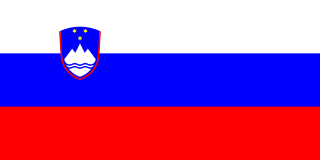
Slovenia officially the Republic of Slovenia is a country in Central Europe. It borders Italy to the west, Austria to the north, Hungary to the northeast, Croatia to the south and southeast, and a short coastline within the Adriatic Sea to the southwest, which is part of the Mediterranean sea. Slovenia is mostly mountainous and forested, covers 20,271 square kilometres (7,827 sq mi), and has a population of approximately 2.1 million. Slovene is the official language. Slovenia has a predominantly temperate continental climate, with the exception of the Slovene Littoral and the Julian Alps. Ljubljana, the capital and largest city of Slovenia, is geographically situated near the centre of the country. Other larger urban centers are Maribor, Kranj, Celje and Koper.
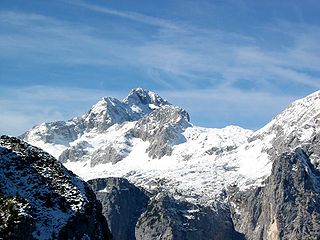
Triglav, with an elevation of 2,863.65 metres (9,395.2 ft), is the highest mountain in Slovenia and the highest peak of the Julian Alps. The mountain is the pre-eminent symbol of the Slovene nation, appearing on the coat of arms and flag of Slovenia. It is the centrepiece of Triglav National Park, Slovenia's only national park. Triglav was also the highest peak in Yugoslavia before Slovenia's independence in 1991.

"Zdravljica" is a carmen figuratum poem by the 19th-century Romantic Slovene poet France Prešeren, inspired by the ideals of Liberté, égalité, fraternité. It was written in 1844 and published with some changes in 1848. Four years after it was written, Slovenes living within Habsburg Empire interpreted the poem in spirit of the 1848 March Revolution as political promotion of the idea of a united Slovenia. In it, the poet also declares his belief in a free-thinking Slovene and Slavic political awareness. In 1989, it was adopted as the regional anthem of Slovenia, becoming the national anthem upon independence in 1991.

In Slovene folklore, Goldhorn or Goldenhorn is a legendary white chamois buck, or alternatively, an Alpine ibex, that had his realm in the heights of Mount Triglav, the highest mountain in Slovenia and the highest peak of the Julian Alps. The legend is well known throughout Slovenia, as well as in Austrian Carinthia, and Italian Friuli-Venezia Giulia.
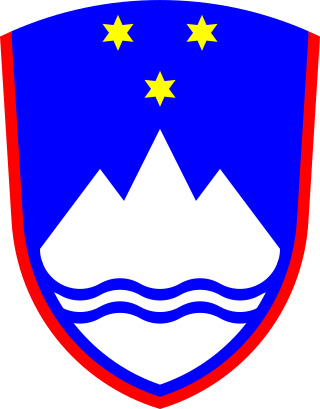
The coat of arms of Slovenia is an emblem that consists of a red bordered blue shield on which there is a stylised white Mount Triglav, under which there are two wavy lines representing the sea and the rivers of the country. Above Mount Triglav, there are three golden six-pointed stars representing the Counts of Celje. It was designed in 1991 by Marko Pogačnik and adopted on 24 June 1991.
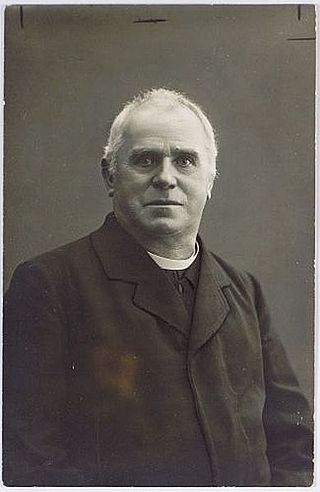
Jakob Aljaž was a Slovene Roman Catholic priest, composer and mountaineer.
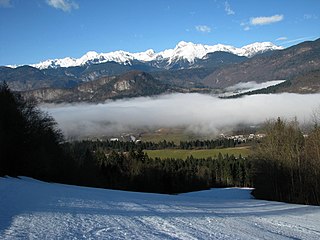
Bohinj, or the Bohinj Valley or Bohinj Basin, is a 20 km long and 5 km wide basin in the Julian Alps, in the Upper Carniola region of northwestern Slovenia. It is traversed by the Sava Bohinjka river. Its main feature is the periglacial Lake Bohinj. Bohinj is part of the Municipality of Bohinj, the seat of which is Bohinjska Bistrica.
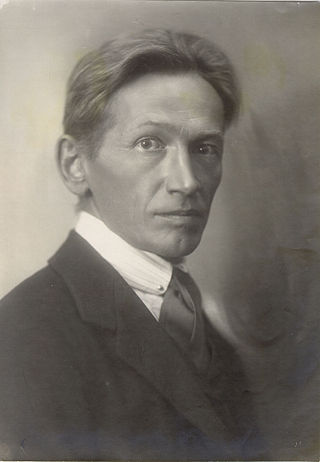
Oton Župančič was a Slovene poet, translator, and playwright. He is regarded, alongside Ivan Cankar, Dragotin Kette and Josip Murn, as the beginner of modernism in Slovene literature. In the period following World War I, Župančič was frequently regarded as the greatest Slovenian poet after Prešeren, but in the last forty years his influence has been declining and his poetry has lost much of its initial appeal.
Janez Lapajne (Slovene:[yannezla-pie-nay]; born 24 June 1967 in Celje, Slovenia, grew up in Ljubljana, Slovenia is a Slovenian film director, producer, writer, editor and production designer.
![<i>On Our Own Land</i> 1948 [[Socialist Federal Republic of Yugoslavia|Yugoslavia]] film](https://upload.wikimedia.org/wikipedia/en/4/42/Na_svoji_zemlji.jpg)
On Our Own Land is a 1948 film directed by France Štiglic. It was the first Slovene sound feature film. It was released on 21 November 1948 in Union Cinema in Ljubljana, received great public acclaim, and was entered into the 1949 Cannes Film Festival.
O, Vrba is a key Slovene pre-war documentary film. It was commissioned by the Educational Union, directed by Mario Förster and produced in 1941 under the auspice of the company Emona Film. Its first internal premiere took place in the beginning of 1942. Due to the so-called "cultural silence" imposed in the Slovene Lands during World War II, it was released only in 1945 by the State Film Company. It is a short black and white film that shows the Prešeren House after it was opened as a museum, on the day when the authors found out about the German assault on Poland, reflected in a dark atmosphere of clouds traversing the Karawanks. The film reflects Förster's fine feel for light and composition. It contains voice recordings of the writer Fran Saleški Finžgar, who led the arrangement of the house, and of the poet Oton Župančič, who recited the Prešeren's poem O Vrba. The music, written by Janko Gregorc, was the first original Slovene film music. The montage and mixing of sound and picture were done by Rudi Omota.

Vintgar Gorge or Bled Gorge is a 1.6-kilometer (0.99 mi) gorge in northwestern Slovenia in the municipalities of Gorje and Bled, four kilometers northwest of Bled. It is located on the edge of Triglav National Park. Carved by the Radovna River, it is the continuation of the Radovna Valley. The sheer canyon walls are 50 to 100 meters high, with a total slope measuring about 250 m (820 ft). The stream has created many erosive features such as pools and rapids, and terminates in the picturesque 13 m (43 ft) Šum Falls, the largest river waterfall in Slovenia.

Milan Zver is a Slovenian politician and Member of the European Parliament (MEP) from Slovenia. He is a member of the Slovenian Democratic Party, part of the European People's Party. He is the Vice-President of the Slovenian Democratic Party. He served as Minister of Education and Sports from 2004 to 2008.

František Čáp, also known as Franz Cap in Germany, was a Czech and later a Yugoslav film director and screenwriter. He directed 32 films between 1939 and 1970. Having created Slovene film classics such as Vesna, Ne čakaj na maj and Our Car, he is also one of the most popular directors of early Slovene cinema in 1950s and the 1960s.
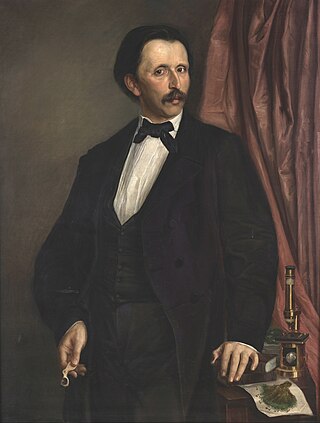
Karel Dežman, also known as Dragotin Dežman and Karl Deschmann, was a Carniolan liberal politician and natural scientist. He was one of the most prominent personalities of the political, cultural, and scientific developments in the 19th-century Duchy of Carniola. He is considered one of the fathers of modern archeology in what is today Slovenia. He also made important contributions in botany, zoology, mineralogy, geology and mineralogy. He was the first director of the Provincial Museum of Carniola, now the National Museum of Slovenia. Due to his switch from Slovene liberal nationalism to Austrian centralism and pro-German cultural stances, he became a symbol of national renegadism.

Janko Premrl was a Slovene Partisan.
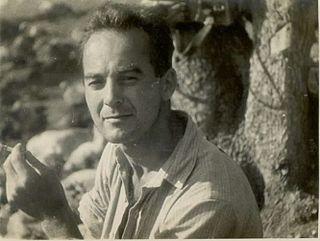
Janko Ravnik was a Slovenian pianist, teacher, film director and composer.

Pavel Kunaver was a Slovene pedagogue, writer of popular science books, geography, history and Slovene language teacher and pioneer of amateur astronomy, mountain climbing, skiing and caving in Slovenia.
The 2012–13 Slovenian PrvaLiga was the 22nd edition of the Slovenian PrvaLiga since its establishment in 1991. Also known by the abbreviation 1. SNL, PrvaLiga was contested by the top ten clubs in Slovenia, for the title of national champions. The fixture schedule was released on 26 June 2012. The season began on 14 July 2012 and ended on 26 May 2013.

Šentvid is a part of Ljubljana, the capital of Slovenia. Until 1974 an independent village in Upper Carniola, it is today the centre of the Šentvid District, one of the districts of the Municipality of Ljubljana.









![<i>On Our Own Land</i> 1948 [[Socialist Federal Republic of Yugoslavia|Yugoslavia]] film](https://upload.wikimedia.org/wikipedia/en/4/42/Na_svoji_zemlji.jpg)







